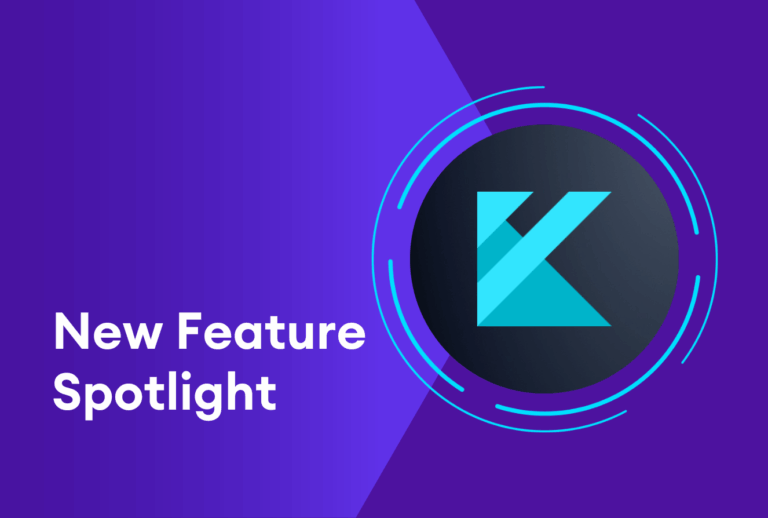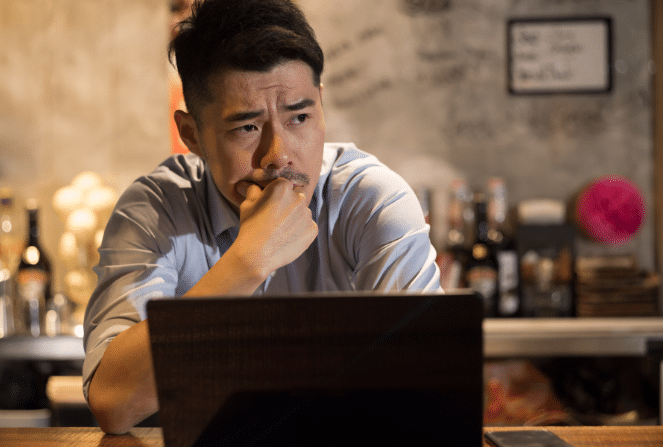Even when we’re not in the midst of a pandemic, the restaurant business is one of the tougher ones. Competition is tight, and margins are too. Trends, technology and regulations are constantly changing. These days, it’s all a restaurant operator can do to keep things running smoothly and maintain status quo — much less increase restaurant sales.
And for some restaurants, that’s just fine. But if your goal is growth: read on for 10 ways you can increase restaurant sales in 2021 and beyond.
1. Evaluate your technology
Hospitality innovation didn’t slow down in 2020; if anything, it picked up speed as everyone was forced to come up with creative solutions to keep diners and employees safe and satisfied.
Many restaurants have tapped into tech that supports the major shift we’ve seen toward off-premise sales due to Covid. Think: online ordering, delivery, contactless payments, etc.
Assuming we return to (some semblance of) normalcy later in 2021: start thinking ahead as to how you’ll continue to leverage that new technology. Maybe you considered some of those investments interim solutions, but it’s likely that consumer expectations have changed for good. Patrons will continue to demand a more seamless and automated experience, whether they’re dining in or carrying out.
And don’t forget about your employees — the backbone of your business. During the pandemic, prioritizing the health and financial security of your people has been imperative. That shouldn’t change, no matter what happens in 2021. Take advantage of tech that makes their experience better — e.g., team communication tools, scheduling platforms, and digital tipping software.
2. Formalize your marketing plan (and your contingency plans, too)
Maybe you’ve never had a marketing plan before, or maybe you “waved the white flag” after getting blindsided by a pandemic and battling shutdowns throughout 2020.
Repeat after us: the past is in the past. It’s a new year, which is a great time to put together a fresh marketing plan and budget that’s specifically designed to increase sales in your restaurant.
While no one has a crystal ball, we’ve all got a much better idea of how Covid can impact our businesses, which makes it easier to put contingency marketing plans in place. That means if your city gets hit with another shutdown, you won’t have to hit the pause button on your efforts; instead, you’ll be prepared to change gears and pull the levers that will support your growth goals until things open back up.
Not sure where to start? Check out our post on building a marketing plan for your restaurant. As you’re mapping it out, think through how your messaging and channels might shift if circumstances change (again) due to Covid.
3. Strengthen your digital presence
Another by-product of 2020: your customers are more internet-savvy than ever before. If you don’t have a website yet, it’s time! You can set up your own (no coding skills required!) with a platform like Squarespace, or you can hire a freelancer or development team to create one for you. You’ll want to make it incredibly easy to find your menu, hours of operation, location, contact information for reservations or questions, etc.
Before you build all your functionality from scratch (like online ordering or payments), take a look at your existing technology; there may be out-of-the-box digital offerings or add-ons you can use to save time and money.
Of course, your website is just one piece of the digital puzzle. Evaluate your social media presence (particularly Facebook and Instagram) to showcase your food, location, and additional offerings, like take-out, delivery or catering. You’ll also want to use these platforms to share news and promotions. Photography is key: if you’re not great with your iPhone, find a team member who is. In fact, it’s a good idea to have a social media point-person who can lead the charge on sharing consistent, on-brand content with your digital audience.
4. Optimize your off-premise/delivery channel
If you currently offer delivery, make sure you’re making it as easy as possible for your customers to order, pay and have their food delivered to them. While third-party delivery apps are an option, fees are high, so it’s important to evaluate if this model is truly feasible for your business. Whatever direction you choose to go, make sure all of your processes — from customer service to staffing to food preparation — are as streamlined as possible to ensure a smooth, transparent experience for your patrons. (Not sure if you should use a third-party service or DIY? Download our free guide!)
5. Refine your recruiting processes
Your people affect every aspect of your business: day-to-day operations, the customer experience, your company culture, and ultimately, your bottom line.
Even if you think things are hunky-dory with your team structure, take a look at:
- Your org chart: Do you have the right people in the right places? Where do you foresee changes happening in 2021? When will you need extra support? Are there new roles you need to add to the team? (For example: maybe college-aged employees are planning to head back to campus when schools reopen, whenever that happens. Maybe tourist season won’t be quite as touristy this year, and you’ll need fewer hands. Maybe you’re ready to up your marketing game and you want to bring on someone to lead the charge.)
- Your recruiting process: Once you have an idea of upcoming or potential needs, go ahead and optimize your recruiting processes. Identify and codify your ideal employee profile: what qualities does every person on your team need to have? What specific experience do you require for each role? It’s also important to consider how you’ll “sell” the job to candidates, especially in a tough labor market. Do you offer benefits? Is scheduling flexible? Do your employees get instant access to their earnings? Even small perks like free food are worth mentioning. (Check out our interview template for more tips!)
6. Reduce your turnover
Once you’ve got the right people in place, how do you encourage them to stick around? Recruiting and training new candidates take time and ultimately cost you money, so it’s worth investing in the employee experience.
Ultimately, that means making them feel cared for and respected, especially during a pretty intense time for hospitality workers. What can you do to keep them healthy and financially secure during a pandemic and the aftermath? Here are a few ideas:
- Most importantly: keep the lines of communication open, so employees feel comfortable sharing any issues before they become major problems.
- Be as flexible as possible when health or family/childcare needs arise.
- Prioritize employee safety by enforcing sanitation procedures, social distancing regulations, etc. (that goes for customers, too!).
- Give them financial security by providing instant access to tips and earnings.
- If you’re in a position to do so, consider offering some level of benefits to your people
- Help them stay in the know when it comes to government support for workers.
7. Improve employee training
Excellent, ongoing employee training is an often-overlooked way to increase restaurant sales. Aside from keeping operations running smoothly and efficiently, having properly trained employees improves the customer experience and ensures your people are confident in their roles (which contributes to employee satisfaction and retention).
Set up a training program for each new employee type, and try to make it templated so you don’t have to reinvent the wheel every time. Consider investing a bit of your time to develop an employee handbook that covers things like:
- General expectations and company values
- Dress code
- Technologies in place
- Daily operations and workflows
- Cleaning checklists
- Safety protocols
- Beginning- and end-of-shift processes (e.g., clocking in and out)
- Payment and tip-out policies
Training shouldn’t just be a one-time deal. Consider setting up monthly or quarterly team sessions focused on areas where your people may need a refresher, or where you can introduce new tools or policies. Solicit feedback on the training so you can continuously improve your training program.
8. Launch a loyalty program
This tactic might be part of your broader marketing plan, but we felt it was worth calling out. We know, we know — everyone’s sick of talking about how “unprecedented,” “challenging,” and “uncertain” these times are…but suffice it to say, there’s no shame in going after low-hanging fruit to increase restaurant sales.
So while a big chunk of your marketing efforts may seek to draw in new customers, don’t neglect the captive audience you’ve already got. Loyalty programs are a great way to incentive patrons to return to your establishment over and over again. Typically, loyalty programs are based on a points system that tracks how many times customers frequent your restaurant, rewarding them with discounts on food and merchandise, buy-one-get-one-free coupons, and even free appetizers and desserts. (Here’s a little inspiration to get your own loyalty program started.)
9. Freshen up your menu
Perform a menu audit to determine which items are working and which aren’t, and rotate in some new options. It’s a great opportunity to experiment with flavors and capitalize on food trends that could help your restaurant bring in a broader audience.
It’s also a good opportunity to communicate with current and potential customers. Consider surveying your VIP patrons about their favorite (and least favorite items). If/when you make changes, make a splash about it. Share photos of your new dishes to share on social, invite local reporters, influencers or food writers to stop by, and promote everything through your tried-and-true channels.
10. Think through your pricing
Now may not be the time to jack up prices, but it’s never a bad idea to take a look at your margins, your clientele, your competitors, etc. and see if it makes sense to shift your pricing around.
You certainly don’t want to upset loyal customers or catch them off guard. But it may be possible to increase pricing on certain items enough to significantly impact your bottom line without significantly impacting your patrons. If you do make changes, ensure you’ve updated your menu everywhere — not just in your restaurant, but also wherever it exists online. Communicate price changes with your employees, and train them on how to respond to any questions or concerns from customers.
(If pricing makes your head spin, here are a few basic calculations that can help!)







